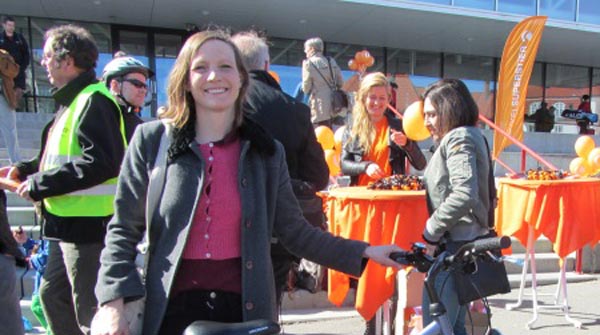New research based on the analysis of Census 2001 and 2011 data has found that growing cycling levels have not been accompanied by greater age and gender diversity.
 THE research, funded by the Economic and Social Research Council (ESRC), and part of a project led by the Centre for Diet and Activity Research (CEDAR) and the National Institute for Health Research (NIHR), found that in places where cycling to work has risen, cycle commuting has remained a disproportionately male activity. It has also become even more skewed towards younger age groups.
THE research, funded by the Economic and Social Research Council (ESRC), and part of a project led by the Centre for Diet and Activity Research (CEDAR) and the National Institute for Health Research (NIHR), found that in places where cycling to work has risen, cycle commuting has remained a disproportionately male activity. It has also become even more skewed towards younger age groups.
The findings are surprising because places where cycling levels are higher tend to have higher proportions of female and older cyclists. For example, in the Netherlands, women cycle more than men, while in Cambridge, which has the UK’s highest cycling levels, almost equal proportions of men and women cycle to work.
The researchers first looked at the relationship between cycling levels and gender balance in all English and Welsh local authorities, using the 2001 and 2011 Census data. In both years there was a clear relationship: areas where cycling levels were higher, such as Cambridge, had a greater proportion of female cyclists. By contrast in areas with very low cycling levels, the gender ratio was extremely unequal, with men up to 14 times more likely to cycle to work than women.
The researchers then looked at representation of older adults (aged 55-74) among commuting cyclists. In 2001, authorities with higher cycling levels tended to have more equal representation of older people among cycle commuters, although in 2011 the relationship was less clear.
Given these cross-sectional results, the authors had expected to find that where cycling has risen, the mix of people cycling would become more equal in terms of age and gender. However, when looking at local authority areas where cycling has gone up, they found this wasn’t the case. Although more women are cycling in those areas, the gender balance isn’t becoming any more equal – cycling is still disproportionately attracting men. The under-representation of older people among cyclists actually increased.
Inner London is one of cycling’s success stories in that cycle commuting rose from 3.8% to 7.2% of workers from 2001 to 2011. However, gender disparities remain, with men continuing to be around 50% more likely to cycle to work than women. And the proportion of older cyclists among Inner London commuters fell from one in seven to around one in ten.

The paper’s lead author, Dr Rachel Aldred, senior lecturer in transport at the University of Westminster, said: “We know from the Netherlands and Denmark that women and older people will cycle if the conditions are right. But these results show that UK policy-makers cannot assume that if cycling grows it will inevitably become more diverse. This has not happened and so we should be targeting policy towards currently under-represented groups. In particular, evidence shows that women have particularly strong preferences for cycle infrastructure fully separated from motor traffic.”

















You must be logged in to post a comment.